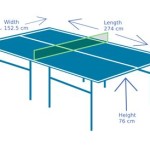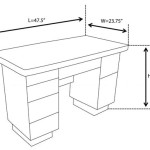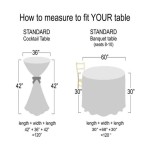Reclaimed Dining Room Table And Chairs: A Sustainable and Stylish Choice
The trend towards sustainable living has significantly impacted interior design, with reclaimed furniture gaining considerable popularity. Reclaimed dining room tables and chairs, in particular, offer a compelling combination of environmental responsibility, unique aesthetics, and lasting durability. This article explores the various aspects of choosing reclaimed dining room furniture, covering the materials used, the benefits offered, the considerations for selection, and the proper care needed to maintain its beauty and integrity.
Reclaimed furniture is essentially furniture constructed from materials that have been repurposed from previous uses. This can include wood salvaged from old buildings, barns, factories, or even fallen trees. The process of reclaiming these materials not only diverts them from landfills but also gives them a new lease on life, transforming them into functional and aesthetically pleasing pieces for the home. The inherent character of reclaimed wood, with its distinctive grains, knots, and imperfections, provides a unique visual appeal that is difficult to replicate with newly manufactured materials.
The Appeal of Reclaimed Wood
One of the primary reasons for the popularity of reclaimed dining room tables and chairs is the unique aesthetic they offer. Unlike furniture made from new wood, reclaimed wood carries a history, a story etched into its very fibers. The wood may exhibit nail holes, saw marks, variations in color, and uneven surfaces, all of which contribute to its distinct character and charm. These imperfections are not flaws but rather evidence of the wood's past life and add a layer of visual interest that is highly sought after by those seeking a rustic or vintage aesthetic.
The inherent texture and warmth of reclaimed wood also make it a desirable choice for dining rooms. The natural variations in the wood grain create a visually interesting surface that is both inviting and sophisticated. Whether the wood is left in its natural state or treated with a stain or finish, it retains its unique character and adds a sense of authenticity to the dining space. Furthermore, the substantial nature of reclaimed wood often results in furniture pieces that are both sturdy and visually impressive, making them focal points of the room.
Beyond its aesthetic appeal, reclaimed wood also boasts exceptional durability. Older wood often comes from trees that were allowed to mature for a longer period than those used in modern mass production. This longer growth cycle results in denser, more robust wood that is less prone to warping, cracking, or splitting. The inherent strength of reclaimed wood ensures that dining room tables and chairs made from this material can withstand daily use and last for generations.
Finally, the environmental benefits of using reclaimed wood cannot be overstated. By choosing reclaimed furniture, consumers are actively contributing to the reduction of deforestation and the preservation of natural resources. Reclaiming wood reduces the demand for newly harvested timber, which in turn helps to protect forests and the biodiversity they support. In addition, the process of reclaiming wood typically requires less energy than manufacturing new lumber, further reducing the environmental impact.
Types of Reclaimed Wood Commonly Used
Several different types of reclaimed wood are commonly used in the construction of dining room tables and chairs. Each type offers its own unique characteristics and visual appeal. Understanding these different types can help consumers make informed decisions when selecting reclaimed furniture.
One of the most commonly used types of reclaimed wood is barn wood. Barn wood is salvaged from old barns and other agricultural structures. It is typically characterized by its rustic appearance, featuring weathered surfaces, nail holes, and saw marks. Barn wood often has a rich patina, which is a result of years of exposure to the elements. This patina adds depth and character to the wood, making it a popular choice for those seeking a vintage or farmhouse aesthetic.
Another popular type of reclaimed wood is heart pine. Heart pine is a type of pine wood that is known for its distinctive reddish-brown color and tight grain patterns. It is sourced from the heartwood of old-growth pine trees, which were often used in the construction of homes and factories in the past. Heart pine is highly durable and resistant to decay, making it an excellent choice for dining room tables and chairs. Its warm color and unique grain patterns add a touch of elegance to any dining space.
Reclaimed oak is another commonly used material for dining room furniture. Oak is a hardwood known for its strength and durability. Reclaimed oak often comes from old factories, warehouses, or other industrial buildings. It is typically characterized by its straight grain and light brown color. Reclaimed oak is a versatile material that can be used to create a wide range of furniture styles, from rustic to contemporary.
In addition to these commonly used types, other reclaimed woods may also be used in the construction of dining room tables and chairs. These may include maple, chestnut, walnut, and various other hardwoods and softwoods. The availability of specific types of reclaimed wood can vary depending on the region and the sources used by the furniture maker.
Considerations When Choosing Reclaimed Dining Room Furniture
Selecting the right reclaimed dining room table and chairs involves careful consideration of several factors. These include the size and shape of the dining room, the desired style, the type of wood, the finish, and the overall quality of the construction.
The size and shape of the dining room should be the primary consideration when choosing a dining room table and chairs. The table should be appropriately sized for the space, allowing ample room for guests to comfortably sit and move around. The shape of the table should also complement the shape of the room. For example, a rectangular table may be a good choice for a long, narrow dining room, while a round or oval table may be better suited for a square room.
The desired style of the dining room is another important consideration. Reclaimed dining room tables and chairs are available in a wide range of styles, from rustic and farmhouse to industrial and contemporary. The style of the furniture should complement the overall aesthetic of the home. For example, a rustic reclaimed wood table may be a good choice for a farmhouse-style home, while a sleek, modern reclaimed wood table may be better suited for a contemporary loft.
The type of wood used in the construction of the furniture is also an important factor to consider. Different types of reclaimed wood have different characteristics and visual appeal. Consumers should choose a wood type that they find aesthetically pleasing and that complements the overall style of the dining room. The durability of the wood is also an important consideration, particularly for dining room tables and chairs that will be used frequently.
The finish of the furniture is another important consideration. The finish protects the wood from moisture and wear and tear. It also enhances the wood's natural beauty. Reclaimed dining room tables and chairs are available in a variety of finishes, from natural oil finishes to painted finishes. Consumers should choose a finish that is durable, easy to clean, and that complements the overall style of the dining room.
Finally, the overall quality of the construction is crucial. Inspect the furniture carefully to ensure that it is well-made and sturdy. Check for any signs of damage, such as cracks, splits, or loose joints. Ensure that the table and chairs are level and stable. Investing in high-quality reclaimed dining room furniture will ensure that the pieces last for many years to come.
Maintaining reclaimed dining room tables and chairs is essential to preserving their beauty and extending their lifespan. Proper care involves regular cleaning, protection from moisture and heat, and occasional refinishing. With proper care, reclaimed dining room furniture can remain a cherished part of the home for generations.

Fryeburg Reclaimed Trestle Table Countryside Amish Furniture

Reclaimed Wood Dining Table Rustic Solid Farmhouse Kitchen The Andersson

Choosing The Perfect Reclaimed Wood Dining Table

Foxcroft Reclaimed Dining Table Countryside Amish Furniture

Exclusive Reclaimed Teak Dining Table Chairs Set 8 Tables And

Reclaimed Dining Table Indoor Or Outdoor Garden Use Industrial Solid Steel Black Square Legs Farmhouse Rustic Pine Wood

20 Reclaimed Wood Furniture Ideas You Ll Wish To Make Wooden Dining Room Table

Dalat Reclaimed Industrial Extendable Dining Table Two Chairs And Bench 100 Rustic Solid Wood Extending On Black Metal Legs Fsc Certified Furniture

Tucson Rainbow Reclaimed Wood Dining Table Shutter Back Chair Set

Stratford Reclaimed Wood Dining Table Scenario Home
Related Posts








